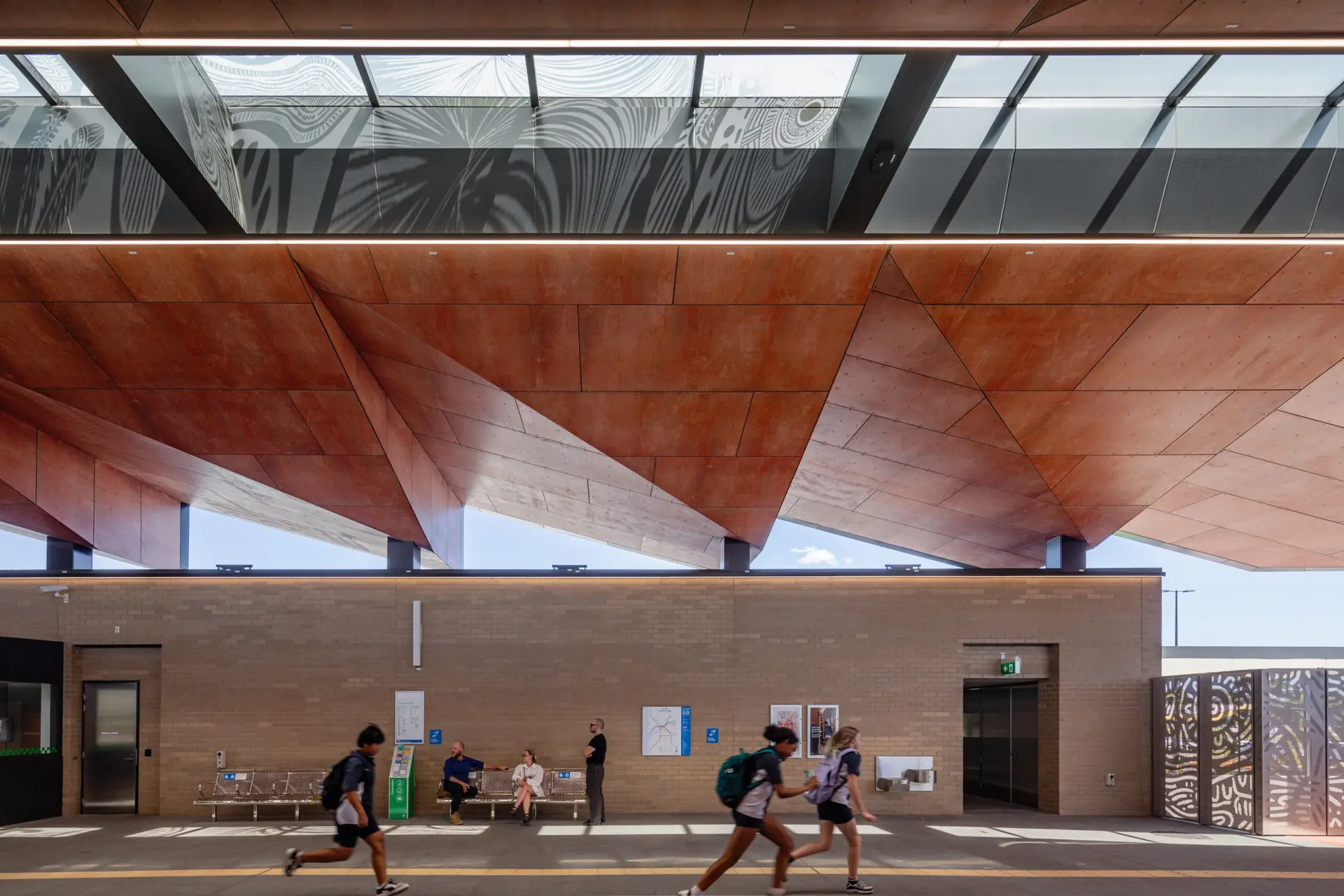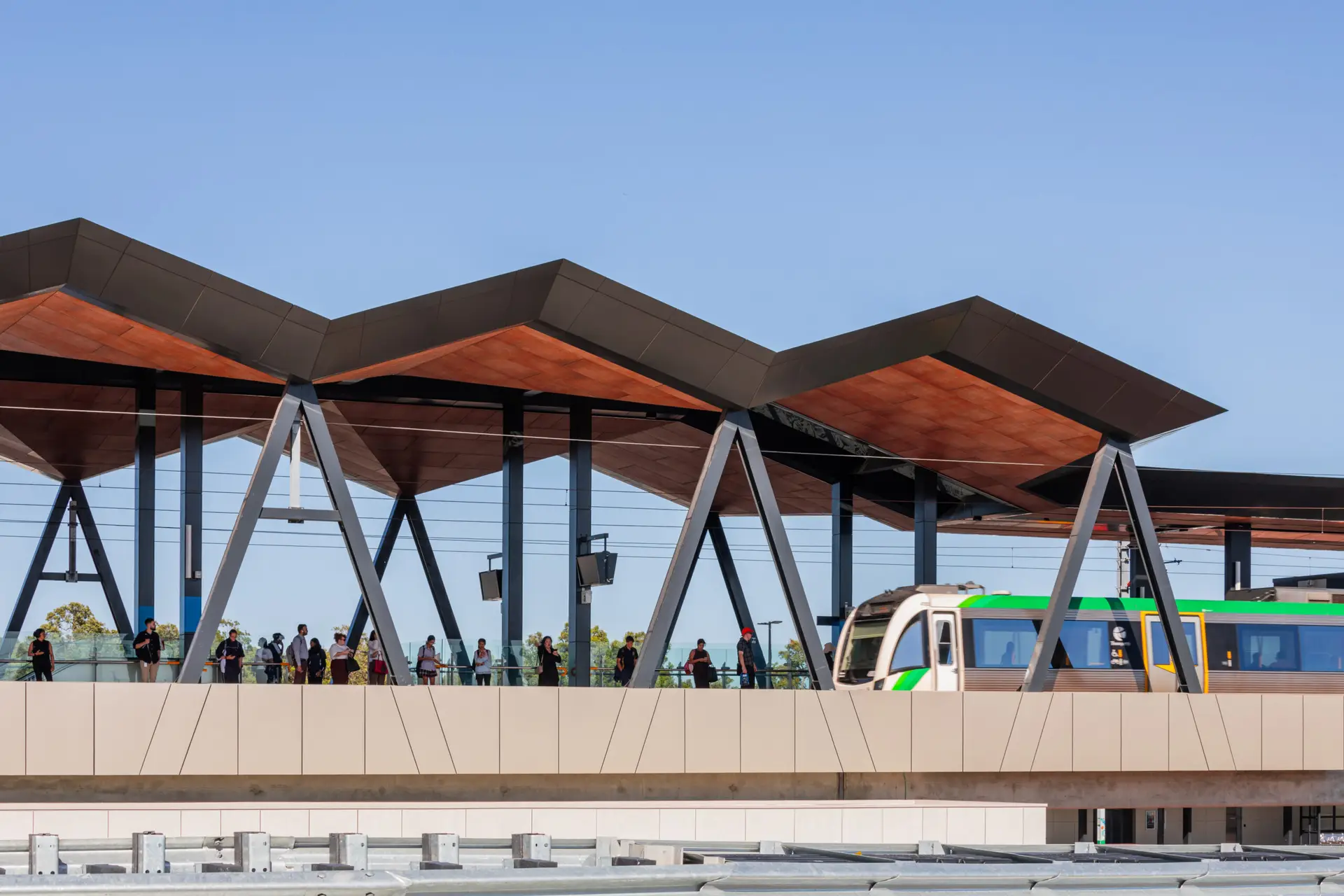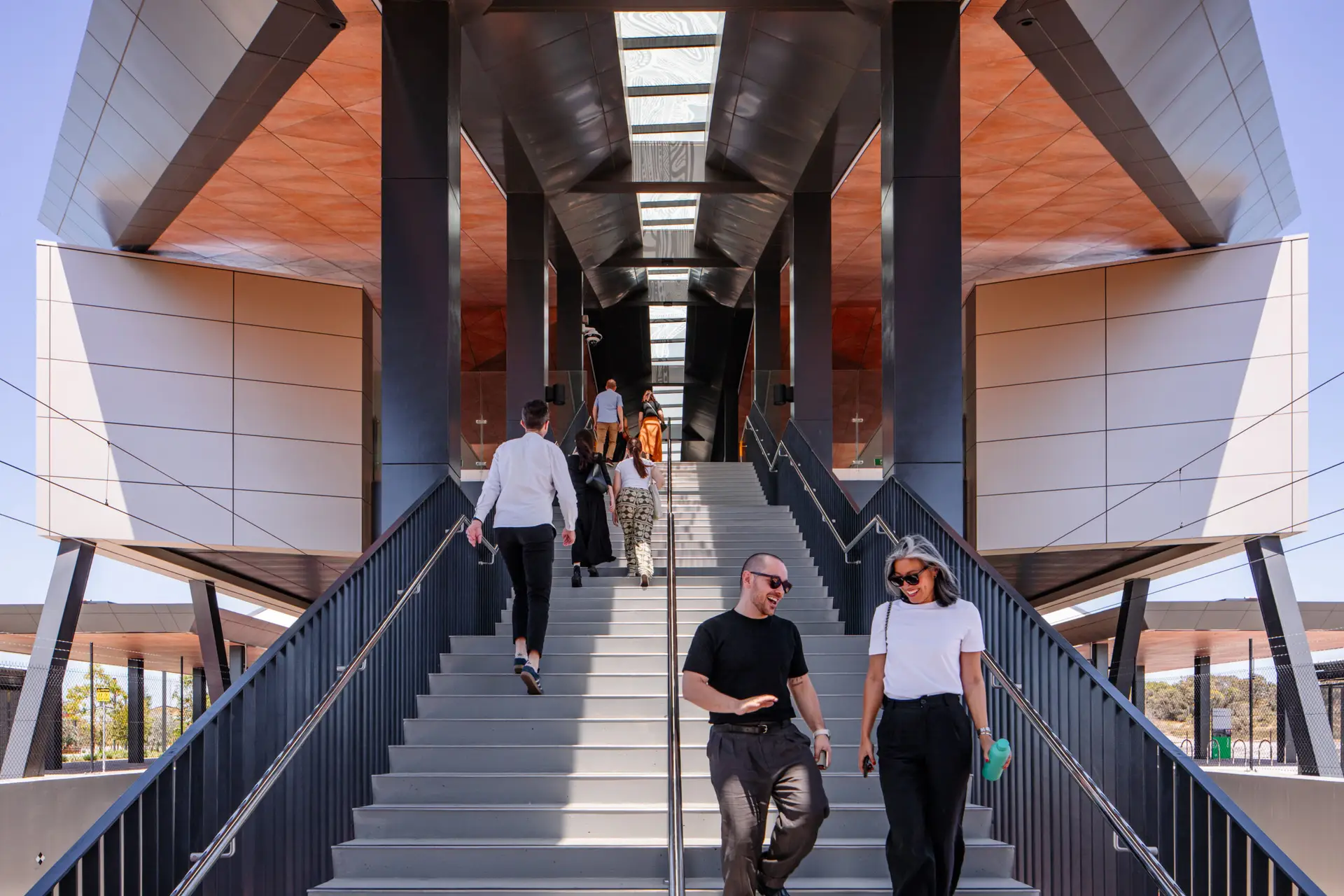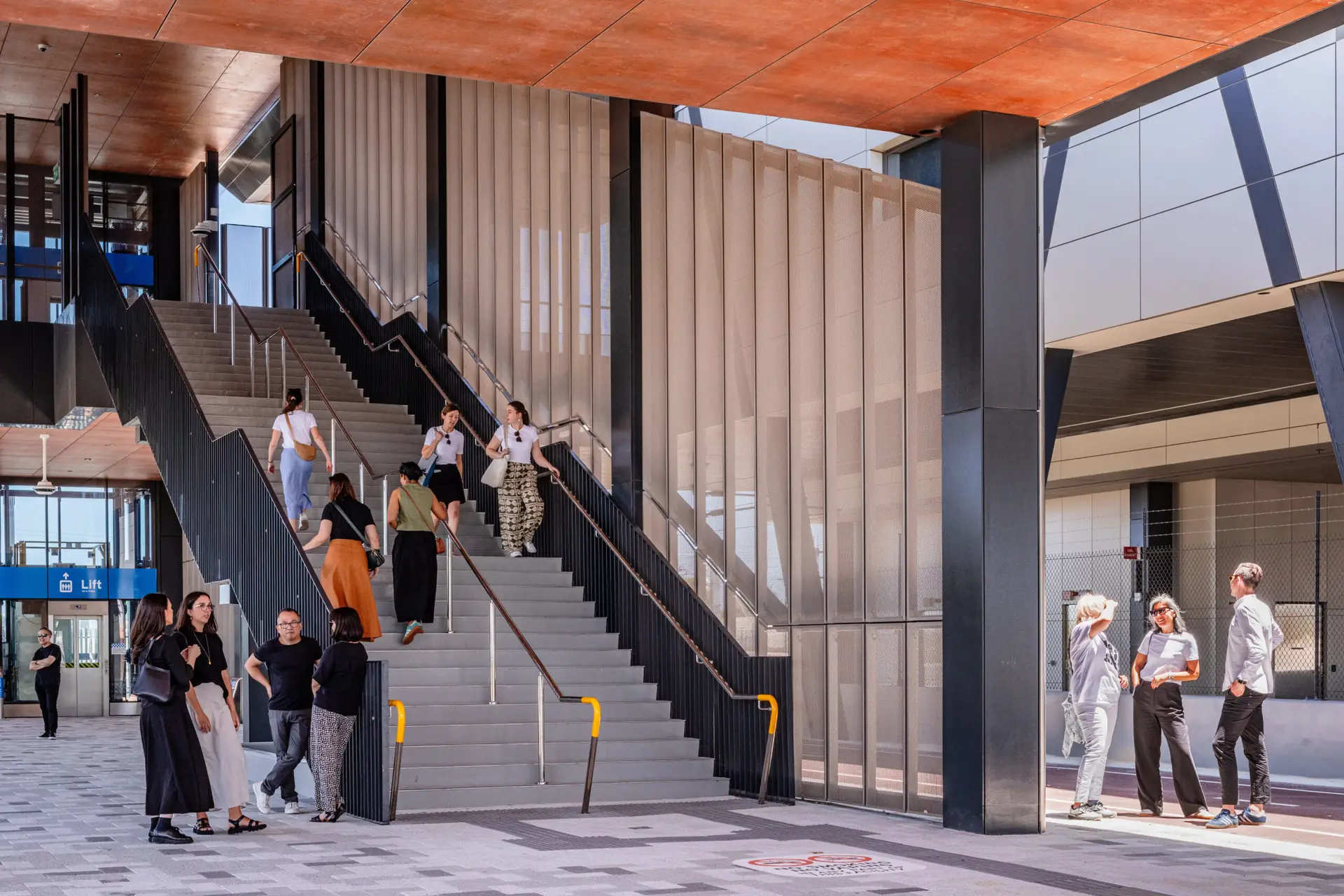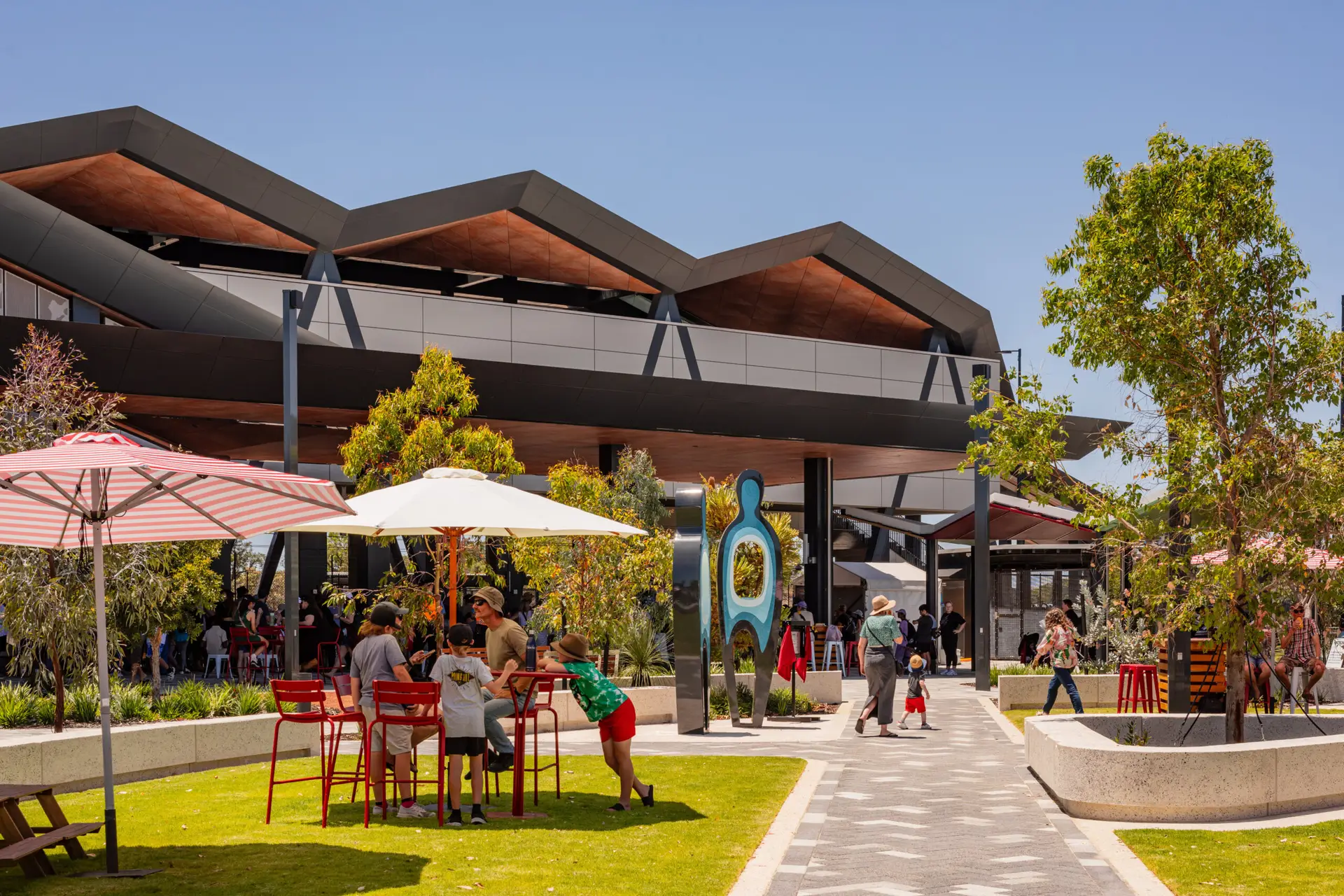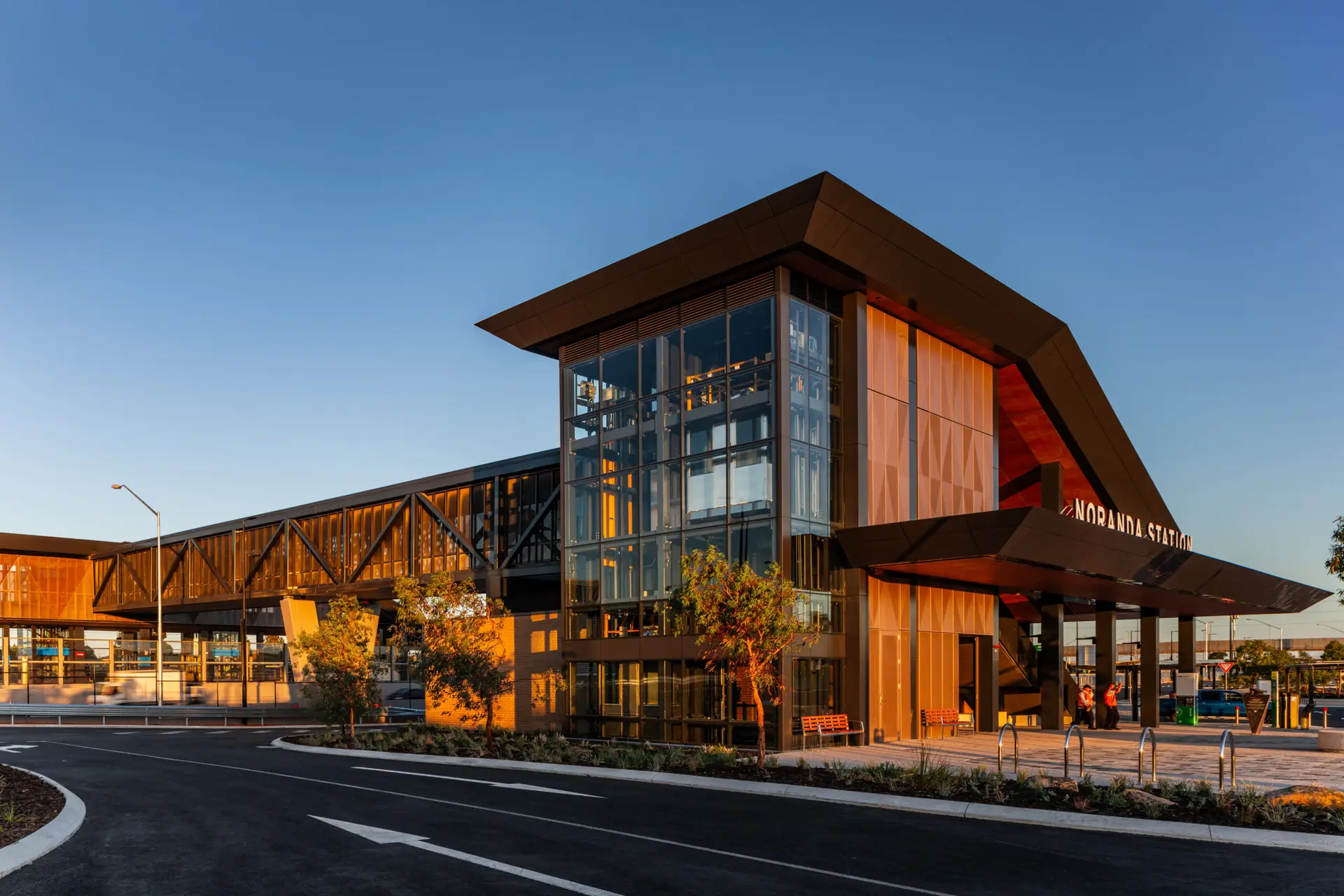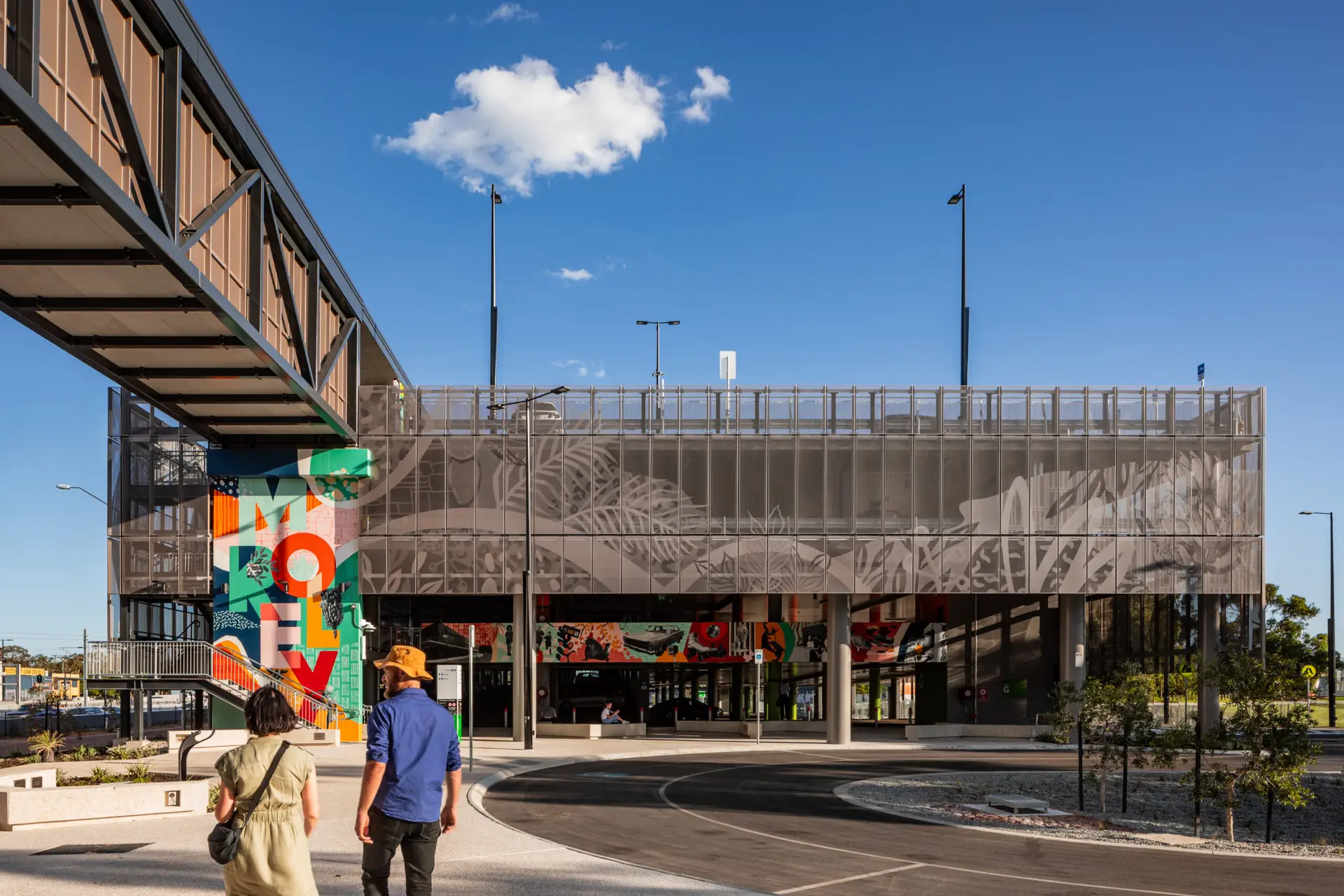METRONET Morley-Ellenbrook Line Project | Woods Bagot with TRCB, TCL and UDLA

2025 National Architecture Awards Program
METRONET Morley-Ellenbrook Line Project | Woods Bagot with TRCB, TCL and UDLA
Traditional Land Owners
The project is located on the traditional lands of the Whadjuk people of the Noongar nation.
Year
Chapter
Western Australia
Category
Public Architecture
Sustainable Architecture
Builder
Photographer
Media summary
The METRONET Morley-Ellenbrook Line Project delivers 5 new stations and precincts at Morley, Noranda, Ballajura, Whiteman Park and Ellenbrook. The project spans 21 kilometres through the growing northeast suburbs of Perth, and at $1.65 billion, is a transformative investment in public transport in Western Australia.
The breadth of the project provided a unique opportunity for the design team to create a line-wide identity and cohesive architectural narrative across the line. Inherently public in nature, the Ellenbrook Line represents a thoughtful integration of civic architecture within Perth’s suburban landscape. The design plays with scale, balancing civic grandeur with domestic scaled environments.
The design narrative draws inspiration from its suburban context, with stations that embrace the qualities, aspiration and sensibilities of Australian suburbia to create human-centred spaces that are safe and easy to navigate, with a sense of familiarity. The project sets new sustainability benchmarks for rail infrastructure in Western Australia.
2025
Western Australia Architecture Awards Accolades
COLORBOND(R) AWARD FOR STEEL ARCHITECTURE (WA)
GEORGE TEMPLE POOLE AWARD
THE WALLACE GREENHAM AWARD FOR SUSTAINABLE ARCHITECTURE
2025
Western Australia Architecture Awards
Western Australia Jury Citation
Metronet Morley – Ellenbrook Line sets an impressive new benchmark for the design and delivery of government infrastructure in Australia. Spanning 21 kilometres of rail and encompassing five new station precincts, the project team has leveraged the opportunities provided by an ambitious sustainability brief coupled with a strong governance framework that promoted collaboration and innovation under an Alliance delivery model, and incentivised outcomes.
The project’s holistic approach to design, procurement, construction and operations has achieved landmark ratings under both building and infrastructure sustainability tools. And the design of station precincts establishes the project’s civic role in the ongoing development of Perth’s north-eastern residential corridor, with multi-modal transport hubs providing quality community amenity well integrated with shady landscaped areas and gathering spaces.
The jury were impressed with the many innovative initiatives embedded in the project design and construction. The project pioneered the first large scale use of FOGO compost in landscaping, set new industry precedents for recycled material content, achieved 99% diversion of construction and demolition waste from landfill, installed a 500kW PV solar system (across the five stations), and utilised a solar farm with battery to power an off-grid construction site, mitigating the use of diesel generators during construction. Targets for reduction of the carbon footprint in energy use, water consumption and embodied energy were all exceeded.
Importantly, the project also celebrates significant outcomes in social and economic sustainability measures, with 52 local Aboriginal businesses included in the team. In addition to an extensive public art component, a thoughtful approach to procurement resulted in the creation of small design packages tailored to suit local indigenous businesses. Gnarla Biddi Strategy targets for Indigenous business spend were exceeded, with $56m achieved, and perhaps more meaningful, an enduring legacy of traineeships and knowledge building has been created.
2025
Western Australia Architecture Awards #2
Western Australia Jury Citation #2
Metronet Morley-Ellenbrook Line Project reflects the marriage of all disciplines and the client in approaching a significant infrastructure project. The extension gives the whole section of line its own identity with both architectural unity and nuance to respond to each location. Each station is a unique experience within a family of architecture and landscape setting devices. Each station is well designed, the spaces are generous, flow easily and create a safe environment.
2025
Western Australia Architecture Awards #3
Western Australia Jury Citation #3
The METRONET Morley-Ellenbrook Line project demonstrates outstanding architectural skill in the provision of exemplary public transport and community facilities, with the end-user experience at the forefront of the design.
The design effortlessly incorporates multiple transport methods into community assets which contribute positively to the surrounding suburbs, serving as a hub for the local population for decades to come.
Each station has a unique yet common architectural language, with highly identifiable graphic forms. The design not only successfully creates a context-responsive architectural language but also provides inviting human-scale environments. The transition from the super-graphic architecture of each station, through to the everyday use of the facilities has been navigated successfully through thoughtful site planning and integration of services and landscaping.
The use of steel has been expertly designed to integrate complex structural challenges, safety and durability requirements. From large scale cantilevering canopies to finely detailed balustrades and decorative screens, the use of steel throughout the project expresses excellence in both design and execution.
This Award celebrates and acknowledges the design of a series of structures, which display excellence in the application of steel, to deliver architecture of the highest quality and contribute significantly to the wider communities which it serves.
2025
Western Australia Architecture Awards #4
George Temple Poole Award
Western Australia Jury Citation #4
The Metronet Morley to Ellenbrook line represents a major investment by the State Government in rail infrastructure supporting the development of this north eastern residential corridor. Not since the northern Joondalup line in the late 80’s have we seen a similar commitment to the quality of the design and public amenity of the stations.
The stations have been located at existing and planned town centre locations to integrate with those centres. Different design strategies were formed for at grade and above grade platforms according to the location parameters to maximise convenience, accessibility and wayfinding. The urban design includes very high quality landscaping, anticipating the arrival of the surrounding urban fabric. As a result these act as a catalyst for urban development with the amenity being ahead of the development wave, instead of lagging behind as can often be the case.
A design framework was formed for consistency of materials, details and construction systems to enable repetition, economy and supply chain efficiency management. Flexibility within the distinctive and coherent architectural language has also enabled variety in the response to the specific needs and brief of the different locations.
As result we see a liveliness of experiences where each station takes on its own community identity within a family of five stations.
The sustainability achievements on this project are literally ground breaking, being unprecedented in transport infrastructure anywhere in Australia. The Ellenbrook Station received a 6 Star Green Star Rating, with 89 points — the highest score for an Australian railway station. Another first was the use of a solar farm powering an off-grid construction site and a Gold rating by the Infrastructure Sustainability Council, the first in Australia and New Zealand.
Materials were preferenced for those with circular economy outcomes and water economy was prioritised for both construction and operation.
Indigenous business contracts totalling $56m were awarded, following a comprehensive survey of delivery capacity of a number of businesses. Discrete subcontract packages were documented by the consultants to align with the capacity of these potential suppliers. These include artwork commissions. An outstanding outcome.
The Morley-Ellenbrook line is the 2025 George Temple Poole Award winner for its outstanding contribution to the social and public infrastructure of a major developing area of Perth and for its setting of new sustainability benchmarks for infrastructure development.
“Woods Bagot’s innovative approach to functionality, safety, and aesthetic appeal ensured that Morley to Ellenbrook Line stations met operational requirements and enhanced the user experience. Their thoughtful design solutions enabled the project to address both the practical and environmental considerations, creating stations each with a unique character and sense of place. Throughout the project, Woods Bagot maintained open lines of communication, worked diligently to meet project milestones, and consistently provided resolution to any challenges that arose. Their commitment to excellence was evident in every phase and the project is incredibly proud of the final results.”- Nick Andrioff
Client perspective
Project Practice Team
Kukame McPierzie, Project Director
Neil Hill, Design Leader
Fred Chaney, Precincts Lead
Linda Randall, Project Manager
Michael Gay, Project Lead
Charl Testa, Stations Lead (Ellenbrook, Whiteman Park, Ballajura)
David O’Brien, Stations Lead (Noranda, Morley)
John Liddiard, Technical Lead
Yow Voon Choong, Technical Design Lead
Emily Duncan, Station Lead – Ballajura
Tatiana Priest, Station Lead – Ballajura
Luciana Boudou, Station Lead – Whiteman Park
Kevin Liew, Station Lead – Ellenbrook
Josh Mangan, Station Lead – Morley
Sally Kingwell, Station Lead – Noranda
Thomas Allan, Design & Documentation
Eddie Chia, Design & Documentation
Joshua Bastian, Design & Documentation
Carissa Araminta, Design & Documentation
Neil Grime, Design & Documentation
Bianca Triscari, Design & Documentation
RJ Estacio, Design & Documentation
Derrick Lim, Design & Documentation
Ryan Deyonker, Design & Documentation
Jordan Blagaich, Design & Documentation
Csilla Csabai, Design & Documentation
Luke Myers, Design & Documentation
Brittany Dalziell, Design & Documentation
Naveen Thomas, Design & Documentation
Jonny Dalton, BIM Manager
Eldon Borkwood, BIM Manager
Graham Whawell, BIM Manager
Scott Adams, Landscape Architecture Lead
Scott Lang, Landscape Design Review
Daniel Firns, Landscape Design Review
Carl Thompson, Landscape Project Lead
Enoch Liew, Landscape Design Lead
Mike Harris, Landscape Architect
Dave Bailey, Landscape Architect
Ruby Coombes, Landscape Architect
Stejara Timis, Landscape Design & Documentation
Ruby Coombes, Landscape Design & Documentation
Katherine Hailstone, Landscape Design & Documentation
Kurt Tanner, Landscape Design & Documentation
Mitch Lobb, Landscape Design & Documentation
Lin Markus, Landscape Design & Documentation
Jacob Conquer, Landscape BIM Lead
Ashley Lloyd, Landscape BIM Coordinator
Project Consultant and Construction Team
Taylor Robinson Chaney Broderick (TRCB), Architecture
TCL, Landscape Architect
UDLA, Landscape Architect
Milestone, Building Certification
O’Brien Harrop Access, DDA consultant
JAJV | FLOTH, Electrical Consultant
JAJV | FLOTH, Mechanical Engineering
JAJV | FLOTH, Communication Engineering
JAJV | FLOTH, Lighting Consultant
JAJV | FLOTH, Rail Engineering
JAJV | FLOTH, Traffic Engineering
JAJV | FLOTH, Fire Engineering
JAJV | FLOTH, Hydraulic Consultant
Definition, Signage
Cundall, ESD Consultant
JAJV | FLOTH | ADG, Structural Engineer
